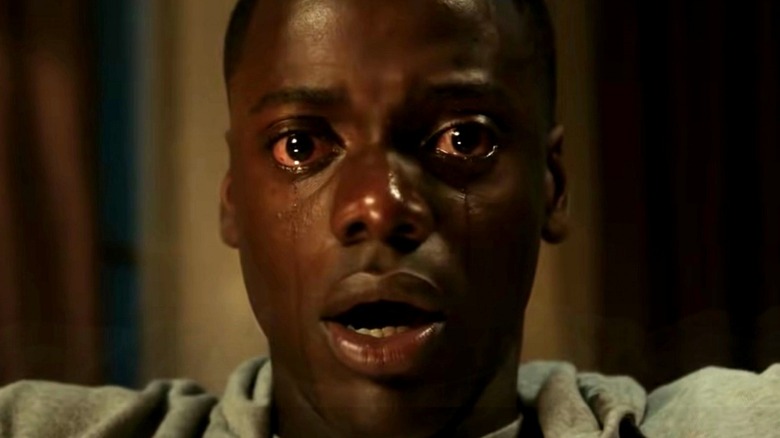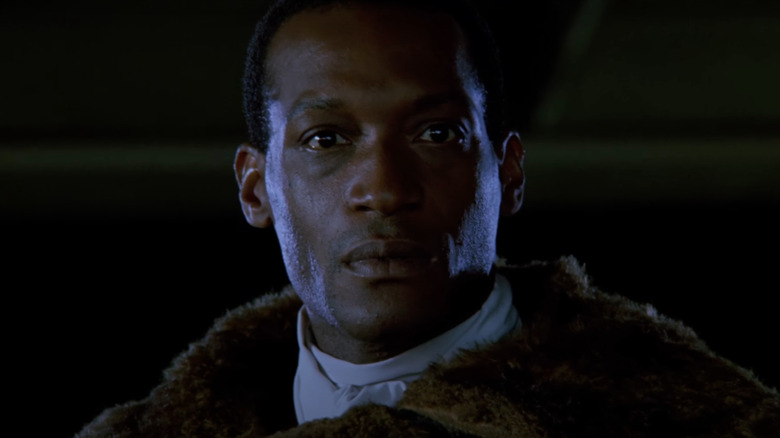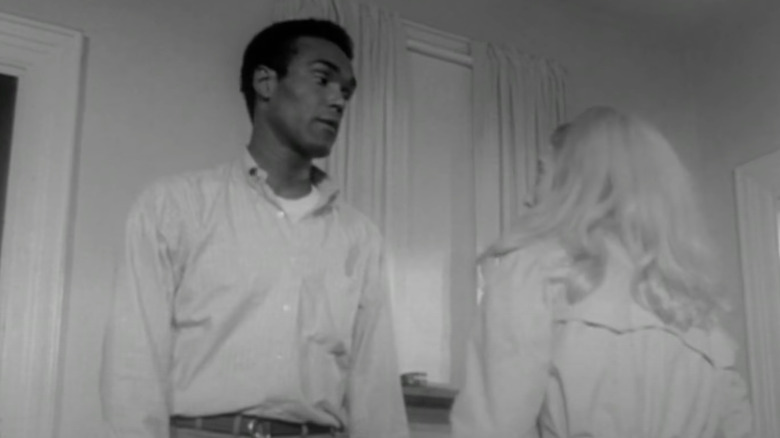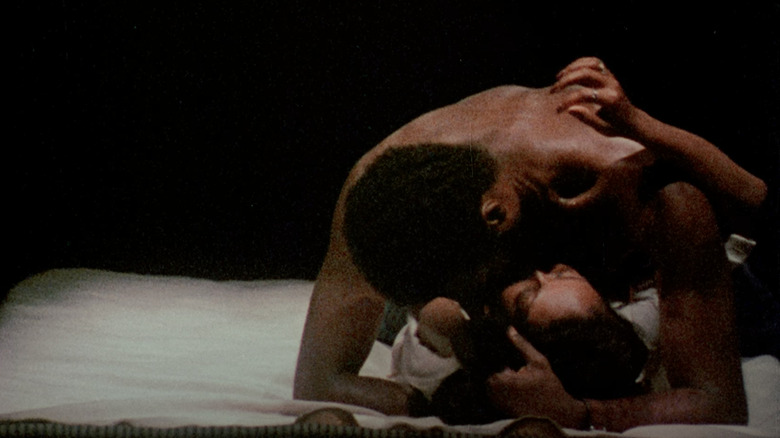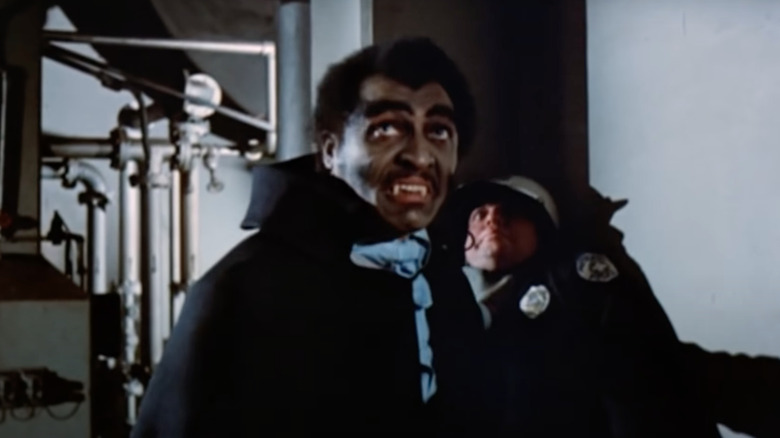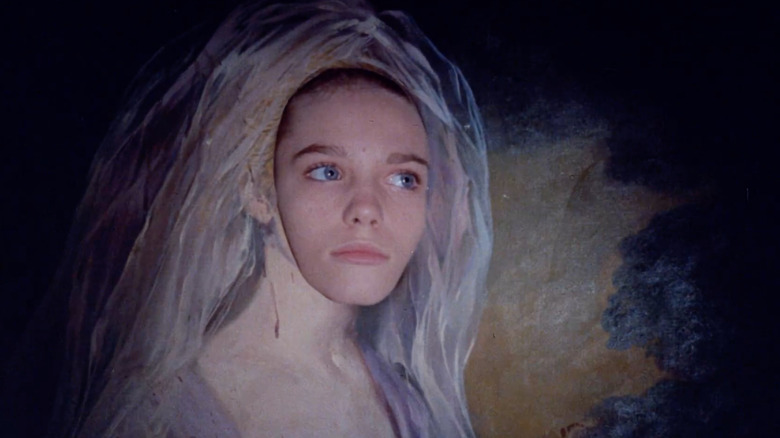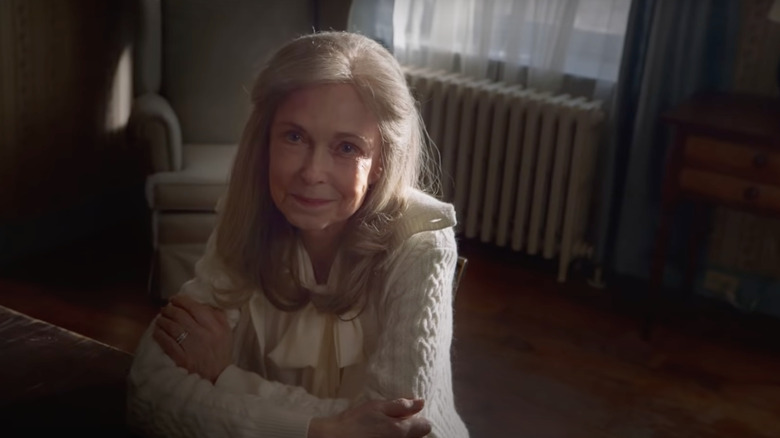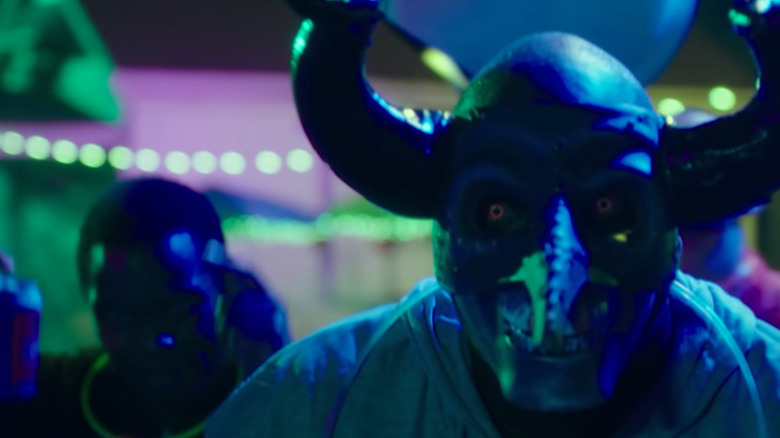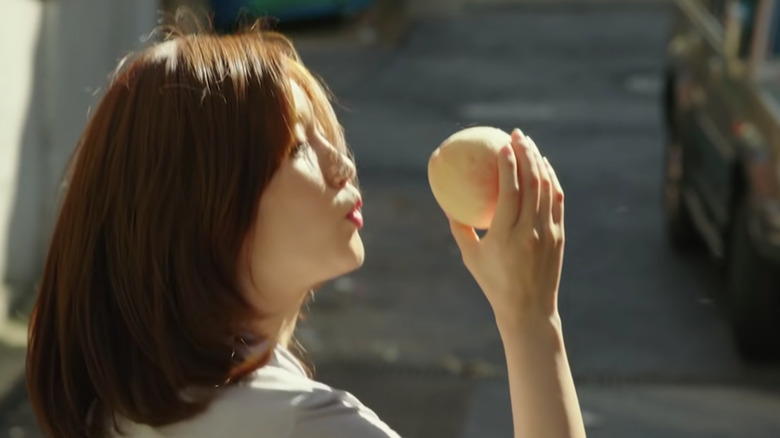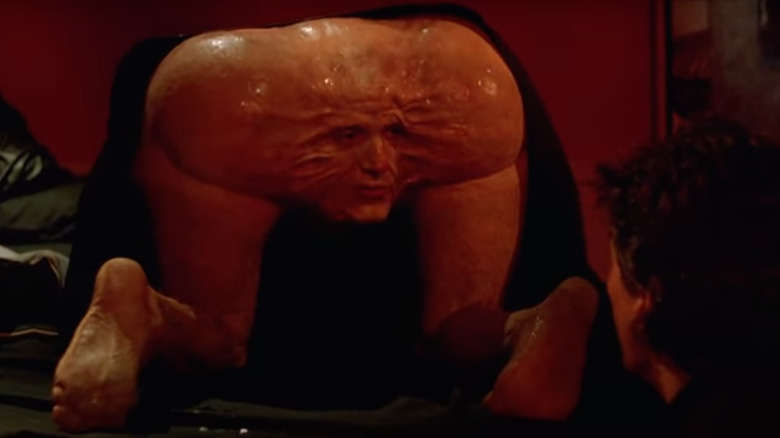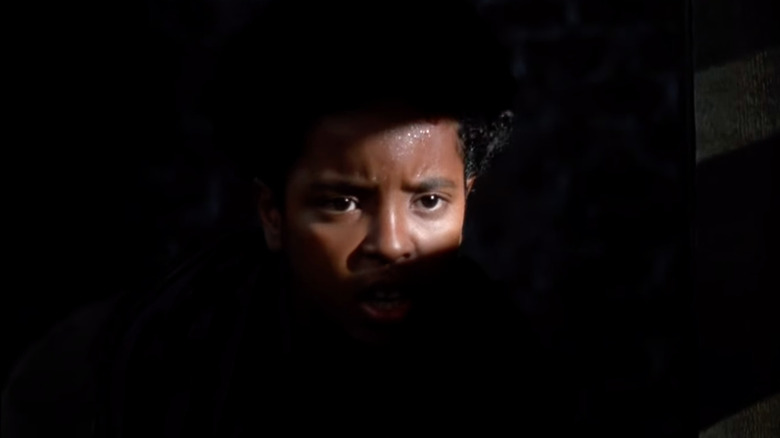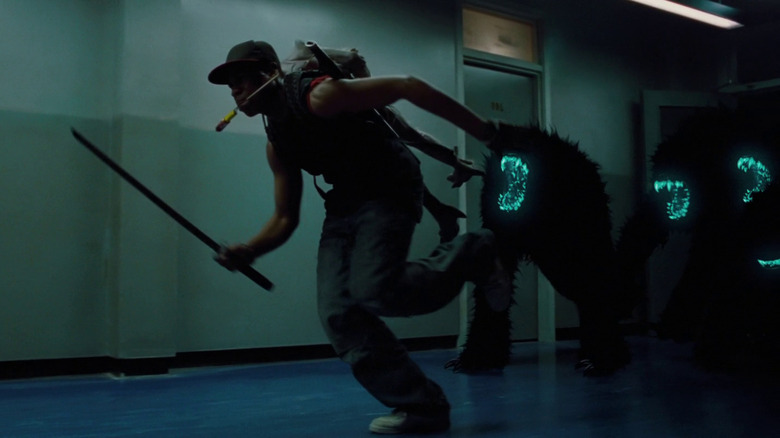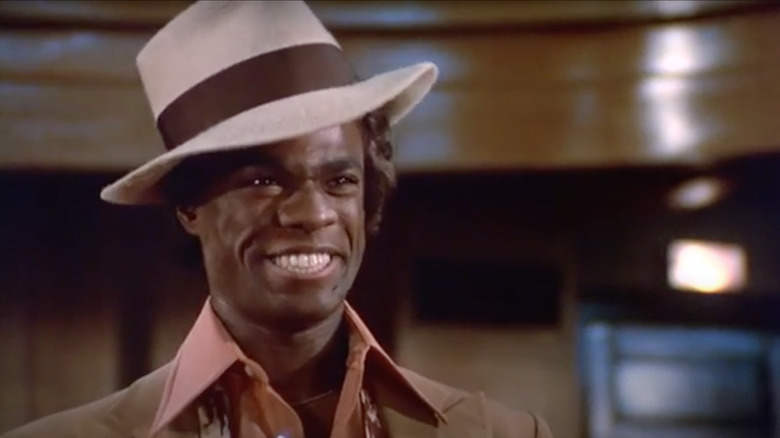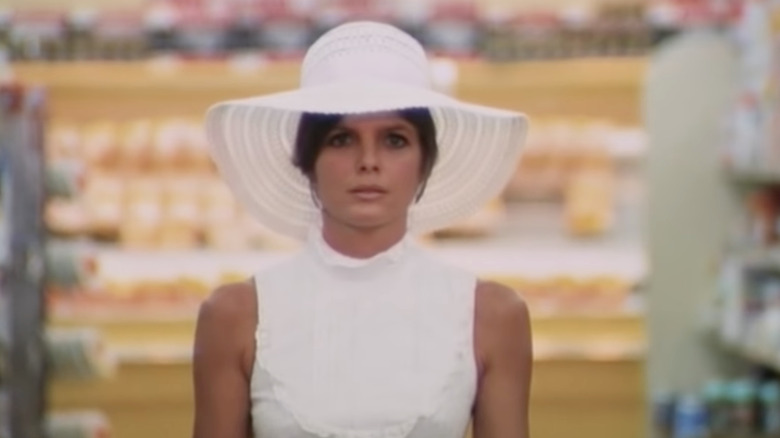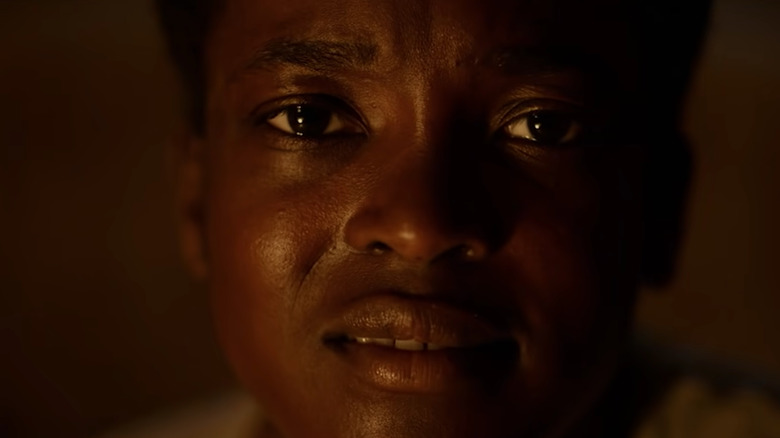14 Movies Like Get Out That Horror Fans Need To See
As we wait for the release of Jordan Peele's next film, "Nope," starring Steven Yeun and Keke Palmer and due out summer 2021, there's plenty of time to explore other horror films that share the mix of scares and smart commentary that makes "Get Out" so special.
Not that politics or social awareness are rare or new in the horror genre, of course. Filmmakers have long told stories about the terrors lurking underneath so-called "respectable" society. Look at "Rosemary's Baby," "The Exorcist," and "Invasion of the Body Snatchers" (both the remake and the original) — you don't have to turn to so-called "elevated horror" to find horror films that have something to say.
But the films on this list are, above all, good, and will also take you on a brief tour of socially-conscious horror filmmaking from the '60s through the 21st century. (One film — see if you can find it — doesn't hit the "socially conscious" beat so much, but it's an entertaining film that shares some basic plot elements with "Get Out." We're sure Jordan Peele would approve.)
Candyman
All bow at the altar of Tony Todd. Okay, Candyman may, technically, be the villain of "Candyman," what with the whole "he's a spirit who haunts a Chicago housing project and kills a whole bunch of people" thing. But, with the gravitas that actor Todd brings to the role — not to detract from the script, adapted by Clive Barker and director Bernard Rose from Barker's original short story — Candyman becomes part slasher villain and part Gothic romantic hero, consigned to an eternity of torment because of, in short, racist jerks.
In the movie, Candyman is Daniel Robitaille, a talented Black painter who becomes romantically involved with a white woman he's been hired to paint. For his trouble, he is tortured and lynched. This backstory, not present in Barker's original story ("The Forbidden," which is set in England), adds a depth and resonance to the film that fans of "Get Out" will appreciate.
Night of the Living Dead
George Romero's "Night of the Living Dead" is an obvious choice for this list, but no less of a fitting one for that, and no less worth of a first (and a second, third, fourth, fifth, or sixth) watch. The film was a direct influence on "Get Out," evidenced particularly in the similarities (and differences) in the two films' respective final scenes — no spoilers, because anyone who's still catching up on their classic horror should not be deprived of seeing one of cinema's most impactful endings with fresh eyes.
Subsequent zombie films based on Romero's classic also exist as spiritual siblings to "Get Out" in many ways. "Dawn of Dead," "Day of the Dead," and "Land of the Dead" all of mix their zombie action with political statements about class, race, and the abuse of government authority. If you're going to pick one, watch "Night." If you're going to pick two, add "Dawn of the Dead," which sets its action in an abandoned mall.
Ganja & Hess
Duane Jones, who starred in "Night of the Living Dead," only appeared in a handful of other films until his death in 1988 at the age of 51. One of those — and the only one, other than "Night of the Living Dead," that he starred in — is writer-director Bill Gunn's "Ganja & Hess," in which Jones plays an anthropologist who is turned into a vampire and begins a relationship with the estranged wife (Marlene Clark, in an underrated powerhouse performance) of his first victim.
"Ganja & Hess" is often lumped into the Blaxploitation genre, which makes a certain kind of sense; it's a film that came out in the '70s, and was directed by and stars Black people. Really, though, it's less "Blacula" (more on that next) and more proto-A24, a stylish and experimental meditation that uses vampirism as a metaphor for addiction. Spike Lee remake "Ganja & Hess" in 2014 as "Da Sweet Blood of Jesus."
Blacula
But, hell, sometimes you don't want to watch a "stylish and experimental meditation." Sometimes you want to watch some grand, glorious schlock, and 1972's Blacula, directed by William Crain, fits the bill. Not that calling it "schlock" means that it doesn't deal with serious issues — the "Blacula" of the title, real name Mamuwalde, is an African prince who, back in the 1700s, asked Dracula to help him stop the slave trade and got turned into a vampire for his troubles.
However, the number one reason to watch Blacula is lead actor William Marshall, who devours the role of Mamuwalde with the skill, intensity, and seriousness that you'd expect from someone playing Hamlet. Marshall might be starring in a movie whose name is literally a pun, but that doesn't mean he's not going to show up and do his job. William Marshall commits. It's an absolute triumph of a performance.
The Blood Spattered Bride
In the '60s and '70s, horror went through a lesbian vampire phase, with directors like Jean Roliln and Jesús "Jess" Franco turning out a series of style-over-substance films that followed roughly the same pattern: young couple meets hot, sophisticated woman in some out-of-the-way location. Hot, sophisticated woman is a (gasp) a vampire and (double gasp) also a lesbian. She seduces the wife, kills a few people, and get offed by the end of the movie.
Spanish director Vicente Aranda's "The Blood Spattered Bride" is a cut above the rest, using — as "Get Out" does — established horror tropes to examine society's unjust behavior towards a marginalized group, in this case women. The movie makes no bones about its token straight husband being a straight-up bad guy, and some troubling topics (including marital rape) are tackled through the horror lens. On a less serious note, "The Blood Spattered Bride" also features something any lesbian vampire movie of the mid-century must have: truly excellent fashion.
The Visit
As a director, M. Night Shyamalan has had ... well, let's just say ups and downs. He faltered in the early '00s, turning in a string of critically-disliked (if not outright reviled) movies like "Lady in the Water," "The Happening," "The Last Airbender," and "After Earth." Then, he stripped down the spectacle, dialed down the budget, and turned in a tight, entertaining found-footage horror film in 2015's "The Visit."
In the film, Olivia DeJonge and Ed Oxenbould play Becca and Tyler, two kids whose single mother has been estranged from her own parents for 15 years. When Becca and Tyler go to spend a weekend with their grandparents, it's a chance for the family to finally reconnect.
Yes, something goes wrong. Yes, there's a twist. It's a pretty basic one — you can probably guess what it is without seeing the film — but really, that represents what's good about "The Visit." It's Shyamalan going back to basics, building on the same tried-and-true "protagonist(s) spend a weekend with people they're supposed to get close to, people aren't what they seem, insert horror" foundation that Jordan Peele used to great effect in "Get Out" a few years later.
The First Purge
From the beginning, the "Purge" series has been rooted in ideas about class difference. What would happen if you had the freedom, one night a year, to do whatever you wanted? Would the rich exploit the Purge to screw over the poor by literally killing them (the baddies in the first "Purge" are basically young Republicans who turn psychotic and hunt down a Black man) or by using more indirect means (businesses having to pay for "Purge insurance," for example)?
With "The First Purge," director Gerard McMurray and writer James DeMonaco (who directed the previous three "Purge" films) take us back to the beginning, explicitly revealing that the Purge was designed as a way to get poor people to kill each other. When that doesn't work, the rich take over, perpetuating some war crimes themselves.
Parasite
Let's go ahead and call this a Bong-Joon Ho vs. Capitalism Combo Special: "Parasite," "Okja," and "Snowpiercer" are all great choices for "Get Out" fans in search of a movie to pop into the queue (as are, for that matter, all of Bong Joon-Ho's films). All three films tackle the evils of capitalism and the wreckage it causes across class lines through different lenses.
In "Parasite," the class difference is represented in two families: one rich, well-meaning, and naïve, the other hard-working, shrewd, and poor. The lower-class family infiltrates the lives of the rich one, with ultimately catastrophic results. In "Snowpiercer," all that's left of humanity after the climate-change apocalypse lives on a single train — the further back on the train you go, the poorer the people are. Revolution inevitably follows. For the villains of "Okja," money is more important than treating animals — in particular, the titular "super-pig" — humanely.
"'Okja,' 'Snowpiercer,' 'Parasite,' they're all stories about capitalism," Bong tells Vulture. "Before it's a massive, sociological term, capitalism is just our lives."
Society
Society: It's disgusting! Both actual society, as depicted in this cult classic '80s movie, and the movie "Society" itself. If you dig the way "Get Out" looks underneath the skin-deep façade of the upper class to witness all the evil underneath, you can't get much better than director Brian Yuzna's "Society" — though you can definitely get classier, 'cause subtle this movie ain't.
Billy Warlock plays Billy Whitney, a teenage '80s yuppie who discovers that his family is involved in a cult that's exclusive to the economic and cultural elite. As to what the cult's involved in, well, that's to be discovered by the brave viewer, although if you've already seen "Society" I'll simply say the word "shunting" and let you flash back to the body horror extravaganza that is the film's gruesome finale. "Get Out" was nominated for four Oscars and won one. If "Society" were to snag an Oscar nom, there'd have to be a category for "Best Scene Where a Man Talks Out of His Own Butt."
The People Under the Stairs
"In every neighborhood there is one house that adults whisper about and children cross the street to avoid," says the trailer for "The People Under the Stairs," Wes Craven's first film of the '90s. It's a sort of reverse "Home Alone" starring child actor Brandon Adams (who would later appear as one of the child ballplayers in "The Sandlot").
Brandon, as Poindexter "Fool" Williams, breaks into the house of his parents' landlords (played by "Twin Peaks'" stars Everett McGill and Wendy Robie) in the hopes of stealing a valuable coin collection that will help him pay for much-needed surgery for his mother. It's no spoiler to say that the landlords, in addition to being greedy, racist gentrifiers, aren't what they seem. Neither is the house itself. There's some powerhouse horror in this one, not to mention a supporting role from Ving Rhames — who doesn't want that?
Attack the Block
Before there was "The Force Awakens," there was writer-director Joe Cornish's "Attack the Block," in which John Boyega proved himself as an immensely skilled actor to keep one's eye on. As with "The People Under the Stairs," "Attack the Block" sets its drama among a lower-class neighborhood — "People" takes place in Los Angeles, "Attack the Block" in London — and uses the evils affecting the people who live there to make points about class and race.
In "Attack the Block," the evil is an alien invasion, which only Moses (Boyega) and the fellow denizens of his housing project care to fight back against. Aside from introducing the world to Boyega, whose transition from hoodlum to hero is one for the ages, and aside from just being a great movie in general, "Attack the Block" also features some of the best creature design (scary, simple, and effective, with lots of teeth) of this century so far.
J.D.'s Revenge
A standout in the Blaxploitation genre is "J.D.'s Revenge," directed by Arthur Marks and starring Glynn Turman, who has had a long and successful career on TV ("Peyton Place," "A Different World," and "Fargo"). Turman plays Ike, a strait-laced, hard-working Black man who drives a cab to put himself through law school.
Everyone around Ike is surprised when he starts acting like a '40s gangster, swinging around a switchblade and just generally acting like a jerk, but that's what happens when you're possessed by old-school hustler J.D. Walker, dead since 1942 and determined to wreak vengeance on the man who killed his sister and pinned the murder on him. Poor Ike was just in the wrong place in the wrong time, but his possession gives us an indispensable entry in the Black horror and Blaxploitation canon. (Also in the mix here is a young Louis Gossett Jr., playing a well-meaning preacher whose eyes are opened to the evil that he didn't know was lurking in his very own community.)
The Stepford Wives
The horror genre is filled with stories of the depravity that lurks underneath the respectable veneer put up by the middle and upper classes. Hell, "See this normal-looking thing? It's actually out to get you" basically is horror, at least in part.
One of the best films in this expansive sub-genre is Bryan Forbes' "The Stepford Wives," in which a young housewife (Katharine Ross) moves with her husband (Peter Masterson) to a postcard-perfect town in the suburbs, only to discover that something weird keeps happening to her female friends.
"The Stepford Wives" (both the movie and the book on which it's based) shares with "Get Out" the creeping fear that someone who you thought loved you is actually conspiring to bring you down for their own selfish gain. "The Stepford Wives" novel was written by Ira Levin, who also wrote the book that would become horror classic "Rosemary's Baby." Both are worth checking out if you're a fan of the film adaptations.
His House
One of the more recent films on this list, Remi Weekes' Netflix release "His House" uses the plight of two South Sudanese refugees attempting to make a life for themselves in England to explore issues of immigration, cultural assimilation, and xenophobia in the contemporary UK. And, because this is a horror movie, some scary shenanigans affect our central couple, namely the ghosts of those they left behind in their harrowing flight to safety.
Finding out what the ghosts want and whether they should fight back or attempt to co-exist — and reckoning with what they had to do to get to safety — provides a compelling metaphor for the plight of refugees today. Serving as a co-lead in "His House" is the always-excellent Wunmi Mosaku (above), who has turned in stellar supporting performances in such shows as "In the Flesh" and "Lovecraft Country," where she played Leti's sister, Ruby, as well as "Loki."
